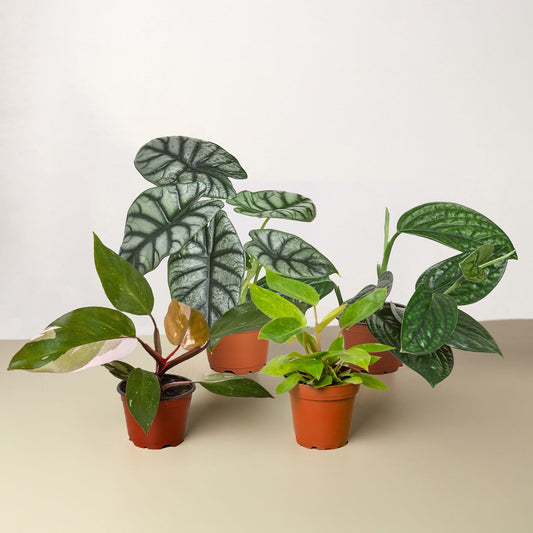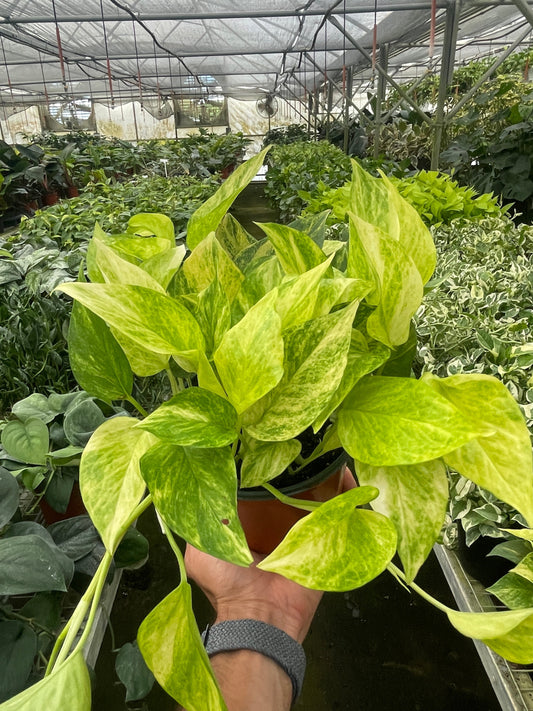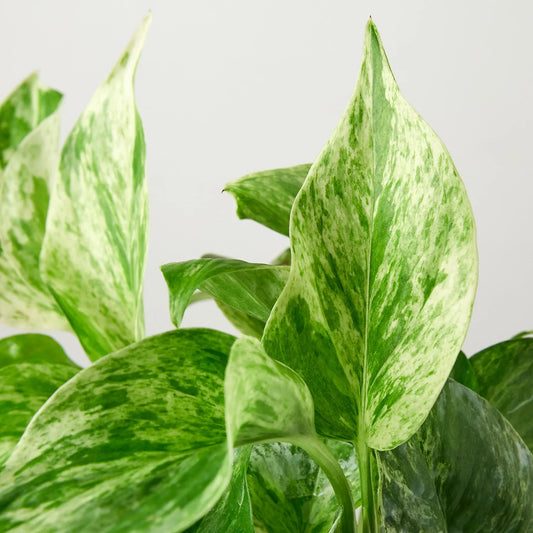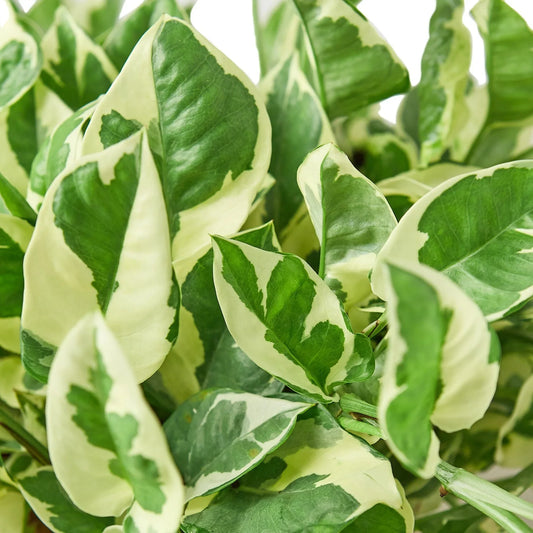How To Fix Brown Spots On Dendrobium Orchid Leaves
Cafe Planta Team
Brown spots on dendrobium orchid leaves can be a real headache for plant lovers. These spots may not only affect the appearance of your beloved orchids but can also signal underlying issues that need attention. Whether you’re a seasoned orchid enthusiast or just beginning your plant journey, understanding how to tackle this issue is crucial for maintaining vibrant, healthy orchids.
In this article, we'll explore the common causes of brown spots on dendrobium orchid leaves and provide practical, step-by-step solutions to fix them. From recognizing signs of trouble to implementing effective remedies, you'll find everything you need to keep your dendrobium orchids thriving.
Identifying Brown Spots on Dendrobium Orchids
First things first, let's talk about what these brown spots actually look like. Brown spots can vary in size, shape, and location on the leaves, and understanding their characteristics can help you determine the cause.
Typically, these spots can appear as:
- Small and circular: Often indicates a fungal or bacterial infection.
- Irregular and spreading: Could be a sign of sunburn or physical damage.
- Dark and crusty: Usually related to mineral buildup or nutrient issues.
Being able to identify these differences is the first step in diagnosing the problem. Remember, the quicker you can identify the issue, the easier it will be to fix.
Common Causes of Brown Spots
Now that we've got the basics down, let's dive into what might be causing these pesky spots. Understanding the root cause will guide you in choosing the right remedy.
Fungal Infections
Fungi are sneaky little things that love warm, humid environments. This makes your orchids a perfect host if conditions are just right. Fungal infections typically show up as small, dark spots that may spread if not treated.
To prevent fungal infections:
- Ensure good air circulation around your orchids.
- Water in the morning so leaves have time to dry before nightfall.
- Avoid overhead watering to minimize leaf wetness.
Bacterial Infections
Bacteria can also cause brown spots, often accompanied by a foul smell or oozing liquid. This is a more serious condition that can quickly spread and damage your plant.
Tips to avoid bacterial infections include:
- Isolate infected plants immediately to prevent spreading.
- Sanitize tools and pots to kill any lingering bacteria.
- Keep leaves dry to discourage bacterial growth.
Environmental Stress
Environmental factors like too much sun or drastic temperature changes can stress your orchids, leading to brown spots. These spots might appear as sunburned patches or dry, brittle areas.
To protect your orchids from environmental stress:
- Place them in bright, indirect light to avoid sunburn.
- Maintain stable temperatures, avoiding cold drafts or excessive heat.
- Use a humidity tray or misting system to keep humidity levels balanced.
Treating Brown Spots on Dendrobium Orchids
Once you've identified the cause of the brown spots, it's time to take action. Here are some solutions tailored to each specific issue.
Treatment for Fungal Infections
If you suspect a fungal infection, it's critical to act fast. Fungus can spread rapidly, so early intervention is key.
- Isolate the affected plant: Move it away from other plants to prevent spread.
- Prune infected leaves: Use sterilized scissors to cut away affected areas.
- Apply a fungicide: Choose a product labeled safe for orchids and follow the instructions carefully.
- Improve air circulation: Consider using a fan or rearranging plants to enhance airflow.
Remember to always wear gloves and wash your hands after handling infected plants to avoid spreading the fungus.
Treatment for Bacterial Infections
Bacterial infections require a bit more care due to their aggressive nature. Here's how to tackle them:
- Remove affected leaves: Cut away any leaves that show signs of infection.
- Disinfect pruning tools: Use rubbing alcohol or a bleach solution to clean your tools after each cut.
- Apply a bactericide: Choose a treatment specific to orchids and apply as directed.
- Monitor plant health: Keep a close eye on your plant for any new signs of infection.
Consistency is key. Regular monitoring and treatment can prevent the problem from escalating.
Preventing Brown Spots in the Future
Prevention is always better than cure, and with a few simple changes, you can help keep your dendrobium orchids spot-free.
Proper Watering Techniques
Overwatering or underwatering can lead to brown spots due to root stress or dehydration.
Here's how to water your orchids properly:
- Check the potting medium: Water when the medium is dry to the touch but not completely desiccated.
- Use room temperature water: Cold water can shock the roots; always opt for lukewarm water.
- Water in the morning: This allows excess moisture to evaporate, reducing the risk of rot.
Environmental Control
Controlling the environment is crucial for preventing brown spots. This involves managing light, temperature, and humidity levels.
Tips for maintaining the right environment:
- Light: Place orchids in an area with bright, indirect light. Curtains or blinds can help filter intense sunlight.
- Temperature: Keep orchids in a consistent temperature range, ideally between 65-75°F (18-24°C).
- Humidity: Maintain humidity levels between 50-70%, using a humidifier if necessary.
Choosing the Right Potting Medium
The potting medium plays a vital role in orchid health. A poor choice can lead to root rot or nutrient deficiencies, both of which can cause brown spots.
For dendrobium orchids, consider:
- Bark-based mixes: These provide excellent aeration and drainage, essential for healthy roots.
- Perlite or charcoal: Add these to improve drainage and prevent water retention.
- Repotting regularly: Change the potting medium every 1-2 years to ensure it remains fresh and supportive.
A well-chosen potting medium can make a significant difference in preventing brown spots caused by root issues.
Monitoring Nutrient Levels
Orchids require a balanced diet to thrive. Too much or too little of certain nutrients can result in brown spots.
Here’s how to ensure your orchids are well-fed:
- Use a balanced fertilizer: Opt for a 20-20-20 formula or one specifically designed for orchids.
- Fertilize regularly: Feed your orchids every two weeks during the growing season and once a month during dormancy.
- Flush the potting medium: Every few months, flush the medium with water to remove any salt buildup from fertilizers.
Balanced nutrition helps your orchids develop strong, resilient foliage that can resist brown spots.
Understanding and Addressing Physical Damage
Physical damage can also lead to brown spots. This might occur from handling, pests, or even curious pets.
To minimize physical damage:
- Handle with care: Be gentle when moving or repotting your orchids.
- Protect from pests: Regularly inspect your plants for signs of insects and treat promptly.
- Pet-proof your plants: If you have pets, ensure your orchids are out of reach.
By taking these precautions, you can prevent unnecessary damage and keep your orchids looking their best.
Common Mistakes to Avoid
Even the most experienced plant parents can make mistakes. Here are some common pitfalls to watch out for when caring for dendrobium orchids:
- Overwatering: Remember, a little drought is better than drowning your orchids.
- Ignoring signs of stress: Pay attention to your plant’s cues and act swiftly if something seems amiss.
- Using harsh chemicals: Always choose gentle, orchid-safe products for pest and disease control.
Avoiding these mistakes can significantly reduce the occurrence of brown spots and help your orchids thrive.
Final Thoughts
Brown spots on dendrobium orchid leaves might seem daunting at first, but with the right knowledge and approach, they’re entirely manageable. By identifying the cause and applying effective treatments, you can restore your orchids to their former glory.
If you ever feel stuck or need more guidance, Cafe Planta is here to help. We offer a variety of houseplants, care accessories, and even fun plant-themed apparel. Whether you're a seasoned plant parent or just starting, we’d love to hear from you. Feel free to email us or drop a message on our Instagram. Let's keep those plants happy and healthy together!



















